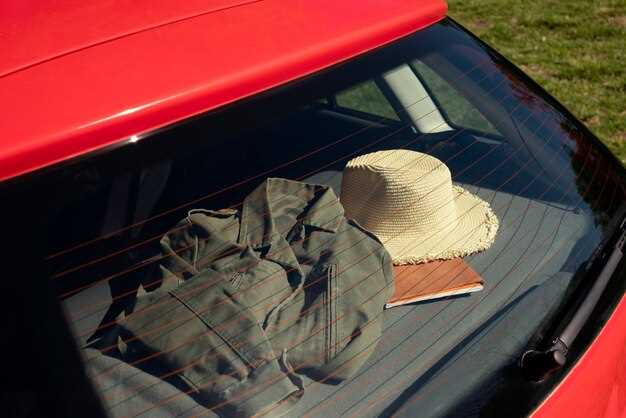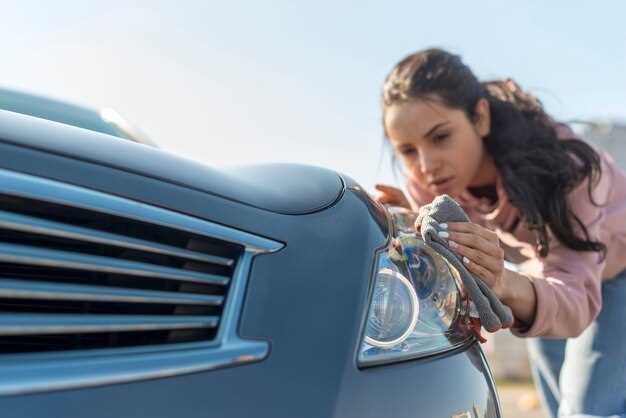
The sun’s rays can have a detrimental effect on your car’s appearance and longevity. Over time, exposure to ultraviolet (UV) rays can lead to fading paint, cracked dashboards, and deteriorated upholstery. Understanding how to safeguard your vehicle from these elements is crucial for maintaining both its aesthetic appeal and resale value.
Implementing simple preventive measures can go a long way in prolonging your car’s lifespan. From choosing the right parking spots to applying protective coatings, there are various strategies that can effectively shield your car from sun damage. These tips are not only easy to apply but also cost-effective, making it accessible for every car owner to enhance their vehicle’s protection.
This article will provide you with essential tips to help you protect your car from sun damage. By incorporating these simple practices into your routine, you can ensure that your vehicle remains in optimal condition despite the harsh effects of the sun.
Choose the Right Parking Spot to Minimize Sun Exposure

Selecting an appropriate parking spot is crucial for protecting your car from sun damage. Parking in shaded areas is one of the most effective strategies. Trees, awnings, or covered garages can significantly reduce the amount of direct sunlight your car receives, thus minimizing the risk of your paint fading and interior materials deteriorating.
If shade is not available, consider parking your vehicle in a way that limits sun exposure during peak hours. Positioning your car so that the rear faces the sun can help protect the more vulnerable front end. This tactic reduces the heating of your dashboard, seats, and other interior elements.
Additionally, pay attention to the angle of the sun throughout the day. Early morning or late afternoon parking may offer better protection compared to mid-day, when sunlight is most intense. Observing local weather patterns can also help you plan your parking choices to take advantage of natural shade and cooler temperatures.
For longer periods, utilizing a car cover can further safeguard your vehicle from UV rays and extreme temperatures. These covers provide an extra layer of protection against sun damage, ensuring that your car remains in optimal condition regardless of the parking spot you choose.
Use Protective Covers and Window Shades

To safeguard your vehicle from sun damage, utilizing protective covers and window shades can be an effective strategy. Car covers are designed to shield your vehicle from harmful UV rays, dust, and other environmental elements. They provide a barrier that helps prevent paint fading, interior cracking, and other forms of wear caused by prolonged sun exposure. When selecting a cover, opt for one that is breathable and UV-resistant to ensure adequate protection without trapping moisture underneath.
In addition to using car covers, window shades play a crucial role in protecting your vehicle’s interior. Sunshades can be placed in the front and rear windshields, effectively blocking direct sunlight. This minimizes the rise in interior temperatures, reducing the risk of damage to upholstery and electronic components. Moreover, window shades help maintain a more comfortable environment when you return to your car, preventing the scorching heat that often builds up inside.
When using protective covers and window shades, ensure they are fitted properly for maximum efficiency. Evaluate your vehicle’s specific dimensions when choosing covers, and prefer shades that offer a custom fit for your glass surfaces. Regularly inspect these accessories for wear and tear, as damaged items may not provide the level of protection needed.
By incorporating both protective covers and window shades into your routine, you can significantly extend the lifespan of your vehicle’s exterior and interior, keeping it looking newer for longer while maintaining its value.
Regularly Maintain Your Car’s Exterior and Interior
Regular maintenance of your car’s exterior and interior is essential to protect it from sun damage and prolong its lifespan. Sun exposure can cause paint to fade, and interior materials to degrade over time. Taking proactive steps can help preserve the aesthetic and functional integrity of your vehicle.
Wash and Wax Frequently: Washing your car regularly helps remove dirt, grime, and contaminants that can harm the paint. It is advisable to use pH-balanced automotive soap and a soft sponge. Following the wash, apply a quality wax to create a protective barrier against UV rays. Waxing every three months can significantly reduce sun damage.
Use a Car Cover: When parking outside, using a high-quality car cover can shield your vehicle from direct sunlight. Look for covers with UV protection to minimize heat buildup and prevent fading of the paint and interior materials.
Protect the Interior: The interior of your car is equally susceptible to sun damage. To protect upholstery, use sunshades for windows when parked. These shades help block UV rays and reduce heat, safeguarding dashboard materials and seats. Additionally, applying a UV protectant to leather or vinyl surfaces can prevent cracking and fading.
Regular Check-Ups: Schedule regular check-ups for your vehicle, focusing on the condition of the paint and interior finishing. Professional detailing services can offer more intensive cleaning and protection solutions. They can also apply ceramic coatings, which provide long-lasting protection against the elements, including sunlight.
Keep Windows Window Tinting in Mind: Professional window tinting can reduce the amount of UV radiation entering your car while also keeping the interior cooler. Ensure the tint complies with local regulations and enhances both comfort and protection for occupants.
Maintaining both the exterior and interior of your car can significantly reduce the effects of sun damage. Regular care contributes to the longevity of your vehicle, helping retain its value and appeal over time.

